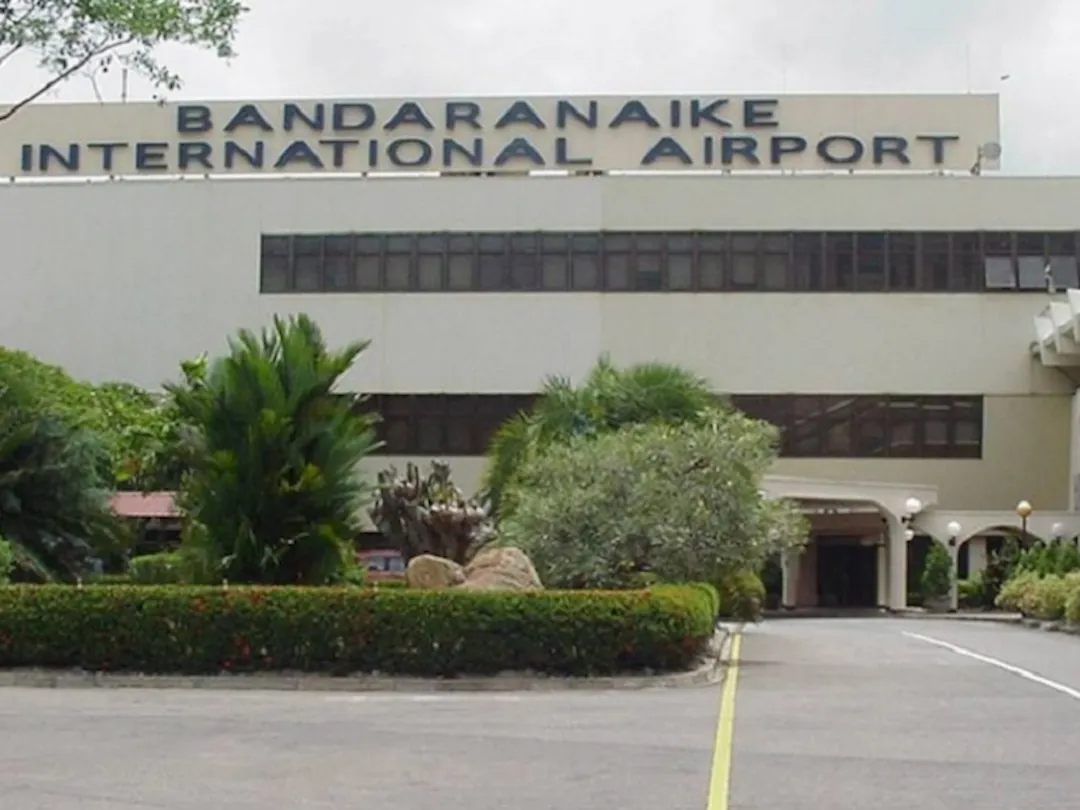
Sri Lanka’s only international airport, Bandaranaike International Airport, has a complex history and a legacy that weaves together Negombo’s roots, British influence, and the ambitions of modern Sri Lanka. Before it became known as Bandaranaike International Airport, the location was a British airstrip built during World War II, rooted in the heart of Negombo.
The airstrip eventually grew and transformed, with different political influences shaping its name and purpose over the years.
Historical Beginnings: The Negombo Airstrip and British RAF Base
It all began in World War II, when the British needed strategic airstrips to support their military operations in Asia. They constructed an airstrip in Katunayake, a mere 6.5 miles from Negombo’s city center, naming it the “Negombo Airport” or “Negombo Airfield” in official documents.
In fact, British colonial records and files from the Greater Manchester County Record Office in the UK still refer to it by these names. This was more than a simple airstrip; it was the British RAF (Royal Air Force) base in Negombo, used as a critical piece in their military strategy. Over time, this site would become the foundation of what we now know as Bandaranaike International Airport, bearing witness to decades of change.
RAF Negombo’s Role and the Coconut Grove Setting
The RAF base was not just an airfield; it was nestled in a sprawling coconut grove that stretched from the Goluwapokuna garden to Katunayake Avariwatta, close to Negombo’s Galkanda junction. This spot was more than just a convenient location for the British; it was a scenic, tropical landscape combining function and beauty. Adding to its strategic importance, Baseline Road connected the RAF base to critical infrastructure.
Initially developed under less-than-ideal government conditions, this road linked the collapsed Negombo Kadawala Tower and the weather-worn Averywatta Tower. It also played an essential role for colonial surveyors, including Fraser, the surveyor general, Major Skinner, and Captain Galway, who used the road to triangulate and map Sri Lanka’s landscape.
Naming Transitions: From “Negombo” to “Katunayake”
As the years passed, the identity of Negombo’s airstrip changed along with Sri Lanka’s political landscape. After independence, Sri Lankan officials gradually replaced “Negombo” with “Katunayake” in official documents related to the airport. By 1952, “Negombo” had all but vanished from the records.
This renaming happened even before the larger Negombo Constituency split, resulting in two new constituencies, Katana and Katunayake-Seeduwa. Many in Negombo felt this was more than just a name change—it was a loss of recognition for their city’s historical contribution.
This sentiment wasn’t just confined to locals but made its way into the Negombo Municipal Council discussions and the Catholic publication Gnanartha Pradipaya, reflecting a shared concern among the community.
The British Departure and the Loss of Services
The airbase remained a central feature of the Negombo area until 1957, when British forces officially withdrew following a request from S.W.R.D. Bandaranaike’s government. With this departure, Negombo not only lost an airbase but also numerous services and community benefits that the British had provided. English language classes, vocational training in baking and fashion, sports activities like tennis and swimming, and even a free weekend cinema screening at the RAF camp were all discontinued.
These services enriched the community, helping residents gain skills and access recreational activities that were otherwise unavailable. Notably, Pipp Care, a prominent figure in British sports circles during the 1960s-70s, got her start here. She was a tennis and bowling sensation who began her journey at the Negombo Royal Air Force Base, eventually winning the 1959 Negombo Tennis Club Championship.
Transition to Sri Lankan Control and the Rise of an International Airport
Following the British exit, the Sri Lankan government quickly moved to establish its own air force base at the location, transferring control of the airstrip to the newly created Sri Lankan Air Force. Renaming it “Lanka Air Force Base Katunayake,” this change effectively removed “Negombo” from official records.
For the local community, this shift was bittersweet. While the airbase remained, many of the unique training classes and programs introduced by the British did not return. Only swimming and tennis training continued at the Air Force base until the early 1990s.
Transformation to an International Airport in the 1960s
The 1960s marked a new chapter for this airstrip, as Sri Lanka’s leaders began envisioning it as an international airport. Spearheading these efforts, Anil Munasinghe, then the Minister of Communications, signed an agreement with Canada to improve the airfield’s infrastructure.
This collaboration expanded the runway, modernized roads, and led to the construction of new airport facilities, eventually resulting in “Katunayake Airport,” Sri Lanka’s first international airport. This vision of making Sri Lanka a global travel hub had finally taken root, with Katunayake Airport now symbolizing the country’s entry into international aviation.
The Bandaranaike Family’s Influence on the Airport’s Name
The airport’s name changed once more when Mrs. Sirimavo Bandaranaike’s government renamed it in 1970 to honor her late husband, S.W.R.D. Bandaranaike. It officially became “Bandaranaike International Airport,” reflecting both a personal tribute and a political move.
This new name removed any references to Katunayake or Negombo, cementing the Bandaranaike legacy in the airport’s identity. Over time, the Bandaranaike name became synonymous with the airport, giving it a permanent place in Sri Lanka’s story of independence and national pride.
Attempts to Revert to Katunayake and Board of Investment’s Emphasis on Negombo Proximity
When J.R. Jayawardene’s government took power in 1977, there was a move to remove the Bandaranaike name from the airport, reverting it to “Katunayake International Airport.” While this change didn’t happen, the airport’s connection to Negombo was highlighted in Board of Investment documents, which cited Negombo’s proximity to attract international investors. These references were part of the effort to make the nearby Katunayake Free Trade Zone appealing to foreign businesses by emphasizing the ease of access from Negombo to the airport. However, despite these efforts, “Negombo” was not restored to the airport’s name.
The Final Name and Legacy: Bandaranaike International Airport, Colombo
The final name change came in 1995 under the leadership of Chandrika Bandaranaike Kumaratunga, who restored the “Bandaranaike International Airport” name as a tribute to her family’s legacy.
This designation has since become firmly entrenched, with the official name now listed as “Bandaranaike International Airport, Colombo, Sri Lanka.” Even the airport’s flight code, CMB, aligns with the Colombo reference, fully excluding both “Negombo” and “Katunayake” from the airport’s official identity. Today, this name reflects Sri Lanka’s capital, Colombo, rather than the smaller towns that played such pivotal roles in the airport’s development.
